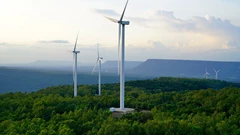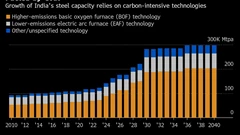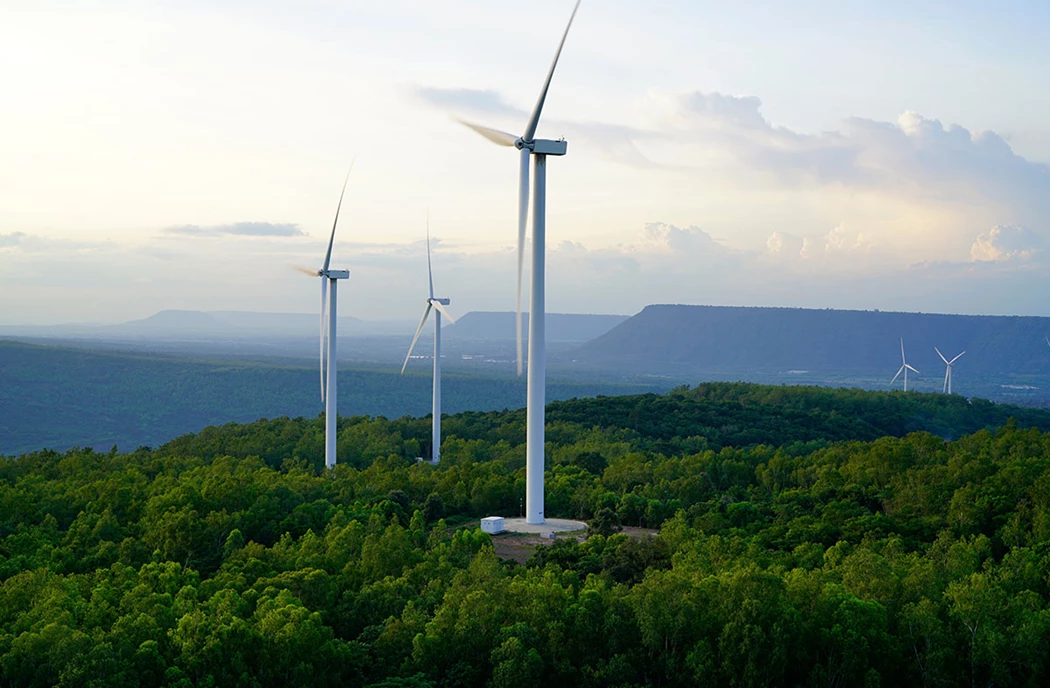US Launches $6 Billion Program to Slash Manufacturing Emissions
(Bloomberg) -- The US is offering $6 billion in funding to decarbonize industrial manufacturing that accounts for 24% of the country’s greenhouse gas emissions, a critical step in the Biden Administration’s effort to reach a carbon-free economy by 2050.
The Energy Department’s Industrial Demonstrations Program will provide up to 50% of the the cost of first-of-a-kind or early-stage projects aimed at stripping carbon dioxide from the production of concrete, steel, chemicals and other energy-intensive materials, according to a statement Wednesday. A dozen states are supporting the effort by pledging to use the low-carbon infrastructure products in state-funded projects.
While utilities are making significant progress is curbing emissions, the industrial sector has been a bigger challenge. New manufacturing systems may be expensive to develop and will likely raise production costs. Government funding can offset some of this burden, while commitments from potential customers will give companies an incentive to transition to low-carbon processes.
“For the longest time, folks have looked at the industrial sector and thought of it as hard to decarbonize and maybe even impossible to decarbonize,” White House National Climate Advisor Ali Zaidi said in an interview. “The industrial sector represents a significant share of our emissions but it also represents a significant opportunity for us to advance bold climate action.”
Funding for the industrial decarbonization push was provided through the Bipartisan Infrastructure Law and the Inflation Reduction Act. Concept papers are due April 21 and final applications must be submitted by Aug. 4. All applicants will be required to submit a plan detailing community benefits, such as job creation, diversity.
The program is expected to also attract private-sector investment that may ultimate lead to $12 billion in total funding for decarbonization efforts.
The Office of Clean Energy Demonstrations, which is overseeing the program, will announce a short list of finalists by next year and select as many as 55 projects by 2025, according to David Crane, director of the DOE unit. He expects to favor proposals that can be scaled to commercial scale and demonstrate a “deep decarbonization,” such as making significant changes at existing factories including retooling chemical production lines.
To help ensure demand will show up, 12 states have agreed to participate in the Federal-State Buy Clean Partnership, a new initiative that will prioritize the use of low-carbon materials in infrastructure projects.
Industrial companies have a stubborn relationship with fossil fuels and the need to cost-effectively tackle these hard-to-abate emissions has been a hot button issue at the annual CeraWeek by S&P Global conference in Houston this week. Hydrogen, long dismissed as unproven and unready, is now garnering significant attention because of incentives under the IRA that may accelerate development.
“Today’s announcement is yet another exciting step in the race to fully decarbonize our heavy industries, and will help drastically reduce harmful pollution while ensuring America’s manufacturing sector is strong and competitive,” US Secretary of Energy Jennifer Granholm said in the statement.
More stories like this are available on bloomberg.com
©2023 Bloomberg L.P.
KEEPING THE ENERGY INDUSTRY CONNECTED
Subscribe to our newsletter and get the best of Energy Connects directly to your inbox each week.
By subscribing, you agree to the processing of your personal data by dmg events as described in the Privacy Policy.
More renewables news

WEC Energy Offered $2.5 Billion US Loan for Renewable Projects

With Trump Looming, Biden’s Green Bank Moves to Close Billions in Deals

GE Vernova Expects More Trouble for Struggling Offshore Wind Industry

Climate Tech Funds See Cash Pile Rise to $86 Billion as Investing Slows

GE Vernova to Power City-Sized Data Centers With Gas as AI Demand Soars

Longi Delays Solar Module Plant in China as Sector Struggles

Australia Picks BP, Neoen Projects in Biggest Renewables Tender

SSE Plans £22 Billion Investment to Bolster Scotland’s Grid

A Booming and Coal-Heavy Steel Sector Risks India’s Green Goals
















